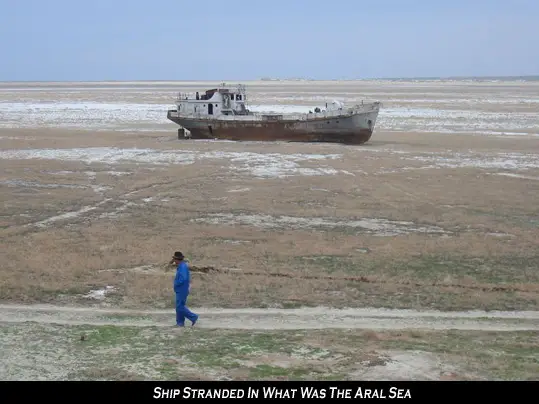Deserts are likely to become more extreme as climate change kicks in, and with few exceptions they are projected to become hotter but not significantly wetter. Temperature increases could be a threat to organisms that exist near their heat tolerance limits.
Desertification, as defined by the UN Convention, is land degradation in arid, semiarid and dry sub humid areas resulting from various factors, including climatic variations and human activities. The trend is more likely to become irreversible if the environment becomes drier with prolonged droughts, and the soil becomes further degraded through erosion and compaction. Drought drains a land of its life-supporting capabilities and declining groundwater tables, increasing erosion, and the disappearance of native vegetation characterise the process. Areas may show all of these symptoms, but the existence of only one usually provides sufficient evidence that the process is taking place. The process typically begins in areas made susceptible by drought or overuse by human populations.
Drought threatens one third of the earth’s land surface (4 billion hectares, and over 250 million people are directly affected. 24 billion tons of fertile soil disappears annually. From 1991 to 2000 alone, droughts have been responsible for over 280,000 deaths; they accounted for 11% of the total water-related disasters.
The Director of the National Department of the Environment in Niger said the that 250,000 hectares are being lost each year in Niger through desertification. This is equivalent to 2,500 km², an area about the same size as Luxembourg. The Department of the Environment, Zinder, explained that firewood destined for Zinder town is collected up to 200 km away and farmers continue to degrade their environment in the agricultural zone.
The mighty Aral Sea has almost dried up and in it’s death throws, and it is reported that the Sahara is expanding in a southward direction. The Gobi in central China has also expanded by about 25,000 square miles since 1994 and its sands are now within 160 kilometres (100 miles) of the capital city, Beijing.
In large areas, sand dunes can encroach on human habitats, like the Gobi is doing. Sand dunes move through a few different means, all of them helped by wind. One way that dunes can move is through salutation, where sand particles skip along the ground like a rock thrown across a pond might skip across the water’s surface. When these skipping particles land, they may knock into other particles and cause them to skip as well. With slightly stronger winds, particles collide in mid-air, causing sheet flows. In a major dust storm, dunes may move tens of meters through such sheet flows. And like snow, sand avalanches, falling down the steep slopes of the dunes that face away from the winds, also moving the dunes forward.

